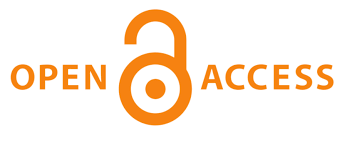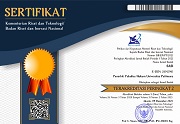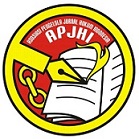Copyright Regulation for AI-Generated Images Legal Approaches in Indonesia and the United States
 ), Ida Ayu Sadnyini(2), Michael Angelo(3)
), Ida Ayu Sadnyini(2), Michael Angelo(3)
(1) Faculty of Law, Universitas Pendidikan Nasional, Denpasar, Indonesia
(2) Faculty of Law, Universitas Pendidikan Nasional, Denpasar, Indonesia
(3) Faculty of Law, Universitas Pendidikan Nasional, Denpasar, Indonesia
 Corresponding Author
Corresponding Author
Abstract
Introduction: The background of this research addresses the generated image by Artificial Intelligence whether it is protected by copyright, it is based on creating an image is usually created directly by the person, but in this context the image created is made by artificial intelligence.
Purposes of the Research: The purpose of this research first to determine the copyright arrangements against images created by artificial intelligence in Indonesia and then to find out related copyright arrangements in the United States related to images generated by artificial intelligence.
Methods of the Research: This research uses normative legal research methods, and the approach used is normative legal research on the basis of the vagueness of norms related to images that degenerate by copyright including copyright. The approach used in this research is a conceptual approach, statutory approach, analytical approach, and comparative approach.
Results of the Research: The images generated by AI are protected by copyright, but the subject that is actually protected is the human who commanded the AI to create the image. Where only humans are considered legal subjects that can protect their work. Although AI can create works, AI itself is not considered to have the morality necessary for copyright law protection. Therefore, in the event that an AI creates a work, copyright law protection is extended to the human controlling the AI as the actual creator.
Keywords
DOI
10.47268/sasi.v30i4.2228
Published
2024-12-31
How To Cite
@article{SASI2228,
author = {Made Doni Raharja and Ida Sadnyini and Michael Angelo},
title = {Copyright Regulation for AI-Generated Images Legal Approaches in Indonesia and the United States},
journal = {SASI},
volume = {30},
number = {4},
year = {2024},
keywords = {Copyright; AI-Generated; Images.},
abstract = {Introduction: The background of this research addresses the generated image by Artificial Intelligence whether it is protected by copyright, it is based on creating an image is usually created directly by the person, but in this context the image created is made by artificial intelligence.Purposes of the Research: The purpose of this research first to determine the copyright arrangements against images created by artificial intelligence in Indonesia and then to find out related copyright arrangements in the United States related to images generated by artificial intelligence.Methods of the Research: This research uses normative legal research methods, and the approach used is normative legal research on the basis of the vagueness of norms related to images that degenerate by copyright including copyright. The approach used in this research is a conceptual approach, statutory approach, analytical approach, and comparative approach.Results of the Research: The images generated by AI are protected by copyright, but the subject that is actually protected is the human who commanded the AI to create the image. Where only humans are considered legal subjects that can protect their work. Although AI can create works, AI itself is not considered to have the morality necessary for copyright law protection. Therefore, in the event that an AI creates a work, copyright law protection is extended to the human controlling the AI as the actual creator.},
issn = {2614-2961}, pages = {355--368} doi = {10.47268/sasi.v30i4.2228},
url = {https://fhukum.unpatti.ac.id/jurnal/sasi/article/view/2228}
}
Journal Article
Akbar, Indra Padillah, and Asep Sarifudin. “Legalitas Kecerdasan Buatan (Artificial Intelligence) Sebagai Subjek Hukum Pemegang Hak Paten.” NUSANTARA: Jurnal Ilmu Pengetahuan Sosial 11, no. 2 (2024): 779–88. http://jurnal.um-tapsel.ac.id/index.php/nusantara/article/view/14217/0%0Ahttp://jurnal.um-tapsel.ac.id/index.php/nusantara/article/download/14217/8507.
Aline, Rr, and Gratika Nugrahani. “Pengaruh Teknologi Terhadap Kepemilikan Hak Kekayaan Intelektual.” Sejarah Artikel 11, no. 2 (2024): 195–204. https://doi.org/10.25105/prio.v11i2.20049.
Azmi, M. Khoirul Wahid, Abdul Rokhim, and Benny K. Heriawanto. “Legality and Legal Protection of Visual Art Works Produced through Artificial Intelligence.” Dinamika Jurnal Ilmiah Hukum 30, no. 1 (2024): 9041–59. https://jim.unisma.ac.id/index.php/jdh/article/view/23614/17668.
Cambridge Dictionary. “Picture.” Cambridge Dictionary, 2022.
Cantika Aulia, Egi Nugraha, and Raja Benhard. “Copyright Responsibilities of Artificial Intelligence in the Digital Age.” Indonesia Law Reform Journal 3, no. 2 (2023): 145–54. https://doi.org/10.22219/ilrej.v3i2.26042.
Castrillon, Carmen O G. “Protection of Intellectual Property through Border Measures in the European Union Protection of Intellectual Property through Border Measures in the European Union ( ∗ ).” Aida, 2012.
Chendrawan, Kelvin, and Nathaniel Hardynatha. “Legal Analysis on The Digital Works Generated by Artificial Intelligence Under the Indonesian Copyright Law.” Anthology: Inside Intellectual Property Rights 2, no. 1 (2024): 270–83.
Diantha, I Made Pasek. Metode Penelitian Hukum Normatif Dalam Justifikasi Teori. Jakarta: PT. Karisma Putra Utama, 2016.
Efendi, Jonaedi, and Prasetijo Rijadi. Metode Penelitian Hukum Normatif Dan Empiris. Edisi Kedu. Jakarta: Penerbit Kencana, 2022.
Fadillah, Rafly Nauval. “Perlindungan Hak Atas Kekayaan Intelektual Artificial Intelligence ( AI ) Dari Perspektif Hak Cipta Dan Paten.” Das Sollen: Jurnal Kajian Kontemporer Hukum Dan Masyarakat 2, no. 2 (2024): 1–16. https://doi.org/10.11111/dassollen.xxxxxxx.
Gamawanto, Raul Julito Safarrel, and Wiwik Afifah. “Legal Position and Regulation of Artificial Intelligence Technology in Indonesia.” Journal of International Trade Logistics and Law 9, no. 2 (2023): 79–83.
Gede Ari Rama, Bagus, Dewa Krisna Prasada, and Kadek Julia Mahadewi. “Urgensi Pengaturan Artificial Intelligence (AI) Dalam Bidang Hukum Hak Cipta Di Indonesia.” Jurnal Rechtens 12, no. 2 (2023): 209–24. https://doi.org/10.56013/rechtens.v12i2.2395.
Greenstein, Stanley. Preserving the Rule of Law in the Era of Artificial Intelligence (AI). Artificial Intelligence and Law. Vol. 30. Springer Netherlands, 2022. https://doi.org/10.1007/s10506-021-09294-4.
Hakim, Hary Abdul, Chrisna Bagus Edhita Praja, and Sung Ming-Hsi. “AI in Law: Urgency of the Implementation of Artificial Intelligence on Law Enforcement in Indonesia.” Jurnal Hukum Novelty 14, no. 1 (2023): 122–34. https://doi.org/10.26555/novelty.v14i1.a25943.
Harry Surden. “Artificial Intelligence and Law Enforcement.” Georgia State University Law Review 35, no. 4 (2019): 225–54. https://doi.org/10.1007/978-3-030-32361-5_10.
Hildebrandt, Mireille. “The Artificial Intelligence of European Union Law.” German Law Journal 21, no. 1 (2020): 74–79. https://doi.org/10.1017/glj.2019.99.
Mayana, Ranti Fauza, Tisni Santika, Yin Yin Win, Jamil Adrian Khalil Matalam, and Ahmad M. Ramli. “Legal Issues of Artificial Intelligence – Generated Works: Challenges on Indonesian Copyright Law.” Law Reform: Jurnal Pembaharuan Hukum 20, no. 1 (2024): 54–75. https://doi.org/10.14710/lr.v20i1.61262.
Melanie Perkins, Cliff Obrecht, Cameron Adams. “Use AI Generated Images.” Canva.com, 2024. https://www.canva.com/help/ai-image-generation-apps/.
Mensah, George Benneh, and Alfred Addy. “Critical Issues for Regulating AI Use in Mental Healthcare and Medical Negligence.” Journal of Law 1, no. 1 (2024): 1–16. https://doi.org/10.13140/RG.2.2.30853.97768.
Naithani, Paarth. “Regulating Artificial Intelligence under Data Protection Law: Challenges and Solutions for India.” Indian Journal of Law and Justice 14, no. 2 (2023): 436–54.
Nicolas Petit. “Law and Regulation of Artificial Intelligence and Robots: Conceptual Framework and Normative Implications.” Working Paper, no. March (2017): 1–31.
Nugroho, Bimo Satria Fajrin, and Muhamad Adji Rahardian Utama. “Legal Protection of Copyright in the Globalization Era: A Comparison of Indonesia and China.” Journal of Law and Legal Reform 1, no. 4 (2020). https://doi.org/10.15294/jllr.v1i4.39424.
Nurjamilah, Puput Putri, Sundari, and Zulfatul Amalia. “Pengaruh Kecerdasan Buatan Terhadap Hak Cipta (Analisis Karya Kreatif Yang Dihasilkan Dari Bing Image Creator).” Jurnal Hukum Dan HAM Wara Sains 3, no. 01 (2024): 77–83.
Pearlman, Russ. “Recognizing Artificial Intelligence (AI).” Journal Of Law & Technology, no. 2 (2018).
Pranadita, Nugraha, Agus Rahayu, and Lili Adi Wibowo. “The Effect of Work Creation Law on the Five Forces of Competition Related to the Formulation of Competitive Strategies According to Michael E. Porter.” Advances in Economics, Business and Management Research 220, no. 1 (2022): 491–96. https://doi.org/10.2991/aebmr.k.220701.090.
Purwaningsih, Endang, and Irfan Islami. “Analisis Artificial Intelligence (Ai ) Sebagai Inventor Berdasarkan Hukum Paten Dan Hukum Islam.” Jurnal Ilmiah Galuh Justisi 11, no. 1 (2023): 1. https://doi.org/10.25157/justisi.v11i1.8915.
Puspita Sari, Amelia, and Dara Manista Harwika. “Legal Liability of Artificial Intelligence in Perspective of Civil Law in Indonesia.” International Journal of Social Science Research and Review 5, no. 2 (2022): 57–60. https://doi.org/10.47814/ijssrr.v5i2.191.
Rahmadi Indra Tektona, Nuzulia Kumala Sari, Maulana Reyza Alfaris. “Quo Vadis Undang-Undang Hak Cipta Indonesia : Perbandingan Konsep Ciptaan Artificial Intelligence Di Beberapa Negara.” Universitas Jember, no. 37 (2021): 285–305.
Rahmahafida, Nadia Intan, and Whitney Brigitta Sinag. “Analisis Problematika Lukisan Ciptaan Artificial Intelligence Menurut Undang-Undang Hak Cipta.” Jurnal Pendidikan Dan Konseling 4, no. 6 (2022): 9688–96.
Rahman, Rofi Aulia, Valentino Nathanael Prabowo, and Aimee Joy David. “Constructing Responsible Artificial Intelligence Principles as Norms : Efforts to Strengthen Democratic Norms in Indonesia and European Union.” Padjajaran Journal of the Law 9, no. 2 (2022): 231–52.
Said, Gulyamov, Khudoberganov Azamat, Sharopov Ravshan, and Abduvaliev Bokhadir. “Adapting Legal Systems to the Development of Artificial Intelligence: Solving the Global Problem of AI in Judicial Processes.” International Journal of Cyber Law 1, no. 4 (2023): 4.
Sebayang, Ekinia Karolin, Mahmud Mulyadi, and Mohammad Ekaputra. “Potensi Pemanfaatan Teknologi Artificial Intelligence Sebagai Produk Lembaga Peradilan Pidana Di Indonesia.” Locus Journal of Academic Literature Review 3, no. 4 (2024): 317–28. https://doi.org/10.56128/ljoalr.v3i4.311.
Ubaydullayeva Anna. “Artificial Intelligence and Intellectual Property: Navigating the Complexities f Cyber Law.” International Journal of Law and Policy 1, no. 4 (2023): 1–8.
Verheij, Bart. “Artificial Intelligence as Law: Presidential Address to the Seventeenth International Conference on Artificial Intelligence and Law.” Artificial Intelligence and Law 28, no. 2 (2020): 181–206. https://doi.org/10.1007/s10506-020-09266-0.
Xudaybergenov, Azamat. “Toward Legal Recognition of Artificial Intelligence Proposals for Limited Subject of Law Status.” International Journal of Law and Policy 1, no. 4 (2023): 1–8. https://doi.org/10.59022/ijlp.55.
Yudhi Priyo Amboro. “Prospek Kecerdasan Buatan Sebagai Subjek Hukum Perdata Di Indonesia.” Law Review XXI, no. 2 (2021): 193–217.
Book
Berlianty, Teng. Hukum Organisasi Perusahaan. Sidoarjo: Zifatama Jawara, 2019.
Diantha, I Made Pasek. Metode Penelitian Hukum Normatif Dalam Justifikasi Teori. Jakarta: PT. Karisma Putra Utama, 2016.
Efendi, Jonaedi, and Prasetijo Rijadi. Metode Penelitian Hukum Normatif Dan Empiris. Edisi Kedu. Jakarta: Penerbit Kencana, 2022.
Thesis, Online/World Wide Web and Others
Merriam Webster Dictionary. “Artificial Intelligence.” Merriam Webster Dictionary, 2024.
Cited-By:
1. Legal Analysis of AI-Generated Creations: Copyright Law Perspectives
Chrisna Bagus Edhita Praja, Hary Abdul Hakim, Basri, Yulia Kurniaty, Elvira Purnama Sari, M. Setiyo, Z. Rozaki, A. Setiawan, F. Yuliastuti, Z.B. Pambuko, C.B. Edhita Praja, V. Soraya Dewi, L. Muliawanti
E3S Web of Conferences vol: 622 first page: 03005 year: 2025
Type: Journal [View Source]
| Dublin Core | PKP Metadata Items | Metadata for this Document | |
| 1. | Title | Title of document | Copyright Regulation for AI-Generated Images Legal Approaches in Indonesia and the United States |
| 2. | Creator | Author's name, affiliation, country | Made Doni Darma Dananjaya Raharja; Faculty of Law, Universitas Pendidikan Nasional, Denpasar; Indonesia |
| 2. | Creator | Author's name, affiliation, country | Ida Ayu Sadnyini; Faculty of Law, Universitas Pendidikan Nasional, Denpasar; Indonesia |
| 2. | Creator | Author's name, affiliation, country | Michael Angelo; Faculty of Law, Universitas Pendidikan Nasional, Denpasar; Indonesia |
| 3. | Subject | Discipline(s) | |
| 3. | Subject | Keyword(s) | Copyright; AI-Generated; Images. |
| 4. | Description | Abstract | Introduction: The background of this research addresses the generated image by Artificial Intelligence whether it is protected by copyright, it is based on creating an image is usually created directly by the person, but in this context the image created is made by artificial intelligence.Purposes of the Research: The purpose of this research first to determine the copyright arrangements against images created by artificial intelligence in Indonesia and then to find out related copyright arrangements in the United States related to images generated by artificial intelligence.Methods of the Research: This research uses normative legal research methods, and the approach used is normative legal research on the basis of the vagueness of norms related to images that degenerate by copyright including copyright. The approach used in this research is a conceptual approach, statutory approach, analytical approach, and comparative approach.Results of the Research: The images generated by AI are protected by copyright, but the subject that is actually protected is the human who commanded the AI to create the image. Where only humans are considered legal subjects that can protect their work. Although AI can create works, AI itself is not considered to have the morality necessary for copyright law protection. Therefore, in the event that an AI creates a work, copyright law protection is extended to the human controlling the AI as the actual creator. |
| 5. | Publisher | Organizing agency, location | Faculty of Law, Universitas Pattimura |
| 6. | Contributor | Sponsor(s) | |
| 7. | Date | (YYYY-MM-DD) | 2024-12-31 |
| 8. | Type | Status & genre | Peer-reviewed Article |
| 8. | Type | Type | |
| 9. | Format | File format | |
| 10. | Identifier | Uniform Resource Identifier | https://fhukum.unpatti.ac.id/jurnal/sasi/article/view/2228 |
| 10. | Identifier | Digital Object Identifier | 10.47268/sasi.v30i4.2228 |
| 11. | Source | Title; vol., no. (year) | SASI; Volume 30 Issue 4, December 2024 |
| 12. | Language | English=en | en |
| 13. | Relation | Supp. Files |
Turnitin (3MB) |
| 14. | Coverage | Geo-spatial location, chronological period, research sample (gender, age, etc.) | |
| 15. | Rights | Copyright and permissions | Copyright: Authors who publish their manuscripts in this Journal agree to the following conditions: 1. The copyright in each article belongs to the author, as well as the right to patent. 2. Authors can enter into separate, additional contractual arrangements for the non-exclusive distribution of the journal's published version of the work (e.g., post it to an institutional repository or publish it in a book), with an acknowledgment of its initial publication in this journal. 3. Authors are permitted and encouraged to post their work online (e.g., in institutional repositories or on their website) before and during the submission process, as it can lead to productive exchanges, as well as earlier and greater citation of published work. 4. Authors have the right to self-archiving of the article (Author Self-Archiving Policy)
License: The SASI Journal is disseminated based on the Creative Commons Attribution-NonCommercial 4.0 International license terms. This license allows anyone to copy and redistribute this material in any form or format, compose, modify, and make derivatives of this material for any purpose. You cannot use this material for commercial purposes. You must specify an appropriate name, include a link to the license, and certify that any changes have been made. You can do this in a way that is appropriate but does not imply that the licensor supports you or your use.
|
Copyright (c) 2024 Made Doni Darma Dananjaya Raharja, Ida Ayu Sadnyini, Michael Angelo

This work is licensed under a Creative Commons Attribution-NonCommercial 4.0 International License.
Cited-By:
1. Legal Analysis of AI-Generated Creations: Copyright Law Perspectives
Chrisna Bagus Edhita Praja, Hary Abdul Hakim, Basri, Yulia Kurniaty, Elvira Purnama Sari, M. Setiyo, Z. Rozaki, A. Setiawan, F. Yuliastuti, Z.B. Pambuko, C.B. Edhita Praja, V. Soraya Dewi, L. Muliawanti
E3S Web of Conferences vol: 622 first page: 03005 year: 2025
Type: Journal [View Source]

 : 4230 times
: 4230 times Download : 2014 times
Download : 2014 times
















